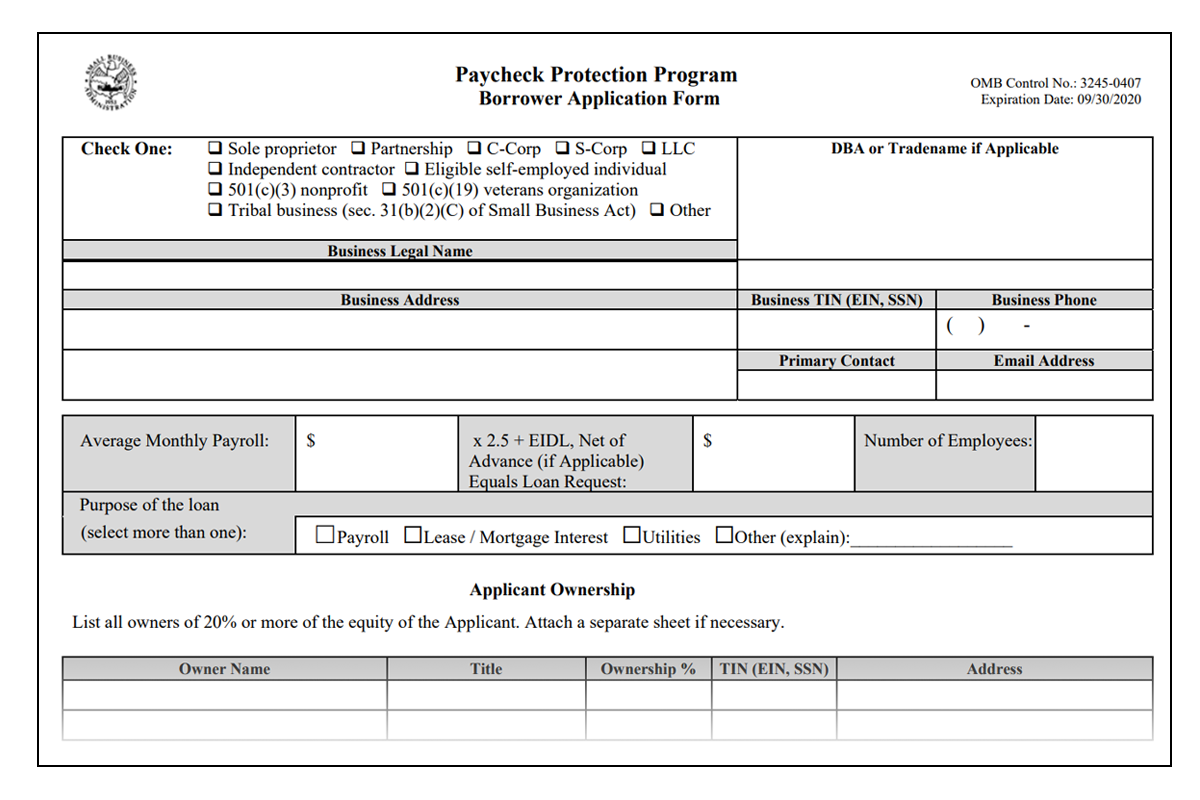Author: Chris Barker, CPA and Treasurer of the Board for the Nonprofit Resource Center
If you were one of the 5,212,128 organizations that received a Paycheck Protection Program (PPP) loan this year, the next burning question is how to get it forgiven. The forgiveness process will vary depending on the bank you received the loan from, but there are certain items you will need to look at no matter the process.
The first thing to look at is the time you have to spend the proceeds. Depending on when you received the loan, you have either 8 or 24 weeks to spend the money and have it count towards forgiveness. Generally, it is recommended to use the entire 24 weeks in order to accumulate the most expense. The 24 weeks will begin on the day you receive the funds and ends 167 days later. If your payroll cycle is semi-weekly or more frequent, you do have an option to change the 24 weeks to align with your payroll cycle, depending on your situation, this may be more beneficial. If you received your PPP loan after July 17, 2020, you only have until December 31, 2020 for your spending.
The next item to look at is what exactly counts towards forgiveness. The covered expenses include gross wages paid to employees, employer health insurance payments, employer contributions to retirement plans, state and local payroll taxes, utilities, rent, and mortgage interest. It is important to note that for utilities, rent and mortgage interest, the utility services, mortgage or lease agreement was signed and/or effective prior to February 15, 2020 in order to count. Any of these items paid during your covered period (24 or 8 weeks) will count towards forgiveness. An interesting part of the PPP rules is that any expenses incurred or paid during the covered period count towards forgiveness. So, if you have employee hours during the covered period but not paid until after, it can still count. The same applies to bills for utilities, rent, and mortgage interest.
There are also several guidelines you must follow in order to receive full forgiveness. The first is that you must maintain the same number of employees on your payroll. To calculate this, you must compare your full-time equivalent employees (FTEs) during the covered period to either February 15, 2019 to June 30, 2019 or January 1, 2020 to February 29, 2020. If you maintain the same number of FTEs, you will have no reduction in forgiveness. If you do not maintain the same number of FTEs, your forgiveness may be reduced. For example, if you had 10 FTEs during the comparative time period and 5 during the covered period, you have a 50% reduction in your forgivable expenses. There are ways to hire back employees and avoid this reduction, if that applies to you, please contact us. The second stipulation is each employee must maintain at least 75% of their total salary during the covered period as compared to the first quarter of 2020. If any employee’s salary drops by more than 25%, your forgivable expenses will be reduced as well. For this calculation, everything is annualized, so you will look at their Q1 pay annualized compared to their covered period pay annualized. As with the FTE calculation, there are ways to restore employee’s salaries to avoid any reduction. If this applies to you, please contact us and we can discuss further.
Once you have gathered your covered expenses, you can move to the application. Each bank will have a different process on how you complete the application. Some banks will have an online portal to click through and enter data, and some will have you fill out the original application from the SBA. Contact your banker to find out how this will be completed. Currently there are 3 types of applications, the 3508, 3508EXZ and 3508S. If you received a loan less than $50,000, you can use the 3508S form, which is the easiest to complete. If you can do the 3508S, all you have to do is spend the loan proceeds and don’t have to worry about the FTE or pay requirements discussed earlier. If your loan was for more than $50,000, you must use the 3508 or 3508EZ. If you have no reduction in your FTE or pay, you can use the 3508EZ form. If you did have a reduction in FTE or pay, you must complete the full 3508. We are here to assist you with any of these forms.
This is just a brief synopsis of the PPP loan program spending and forgiveness process. If you would like our help during any step of the process, please do not hesitate to contact us. The process can be complex and confusing and we are here to help!

